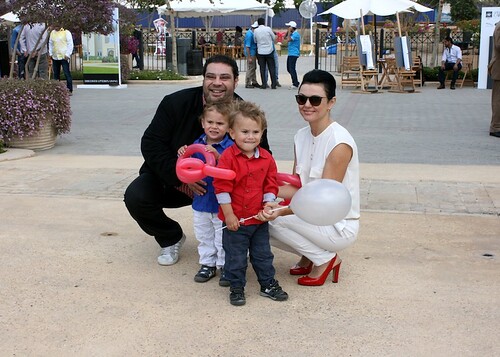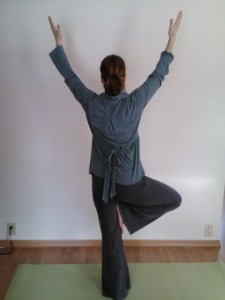 No matter when a divorce commences, it is practically inevitable that there will be at least one special event—a child’s birthday, a graduation, a holiday, a family reunion—that occurs during the divorce process. Determining how to celebrate such events can add stress to an already difficult situation.
It is understandably the case that many divorcing parents are not ready, willing or able to jointly plan or celebrate a family event, and they should not feel pressured to do so. Children will feel supported by parents who succeed in keeping them at the center and out of the middle, and that alone is a huge accomplishment. Despite how parents feel about each other, their children should experience freedom to enjoy special events and celebrations planned by each parent. Parents should be supported and encouraged to coordinate and alternate the hosting of special events for their children with as much courtesy and good will as possible.
But what about divorcing parents who are not in high conflict and are generally co-parenting well? Sometimes parents can feel pressured by cultural expectations about what should happen in a divorce, e.g. divorcing parents should have separate birthday celebrations for their kids; divorcing parents should not jointly host a graduation party; soon to be ex-in-laws should not be invited to an extended family gathering at the other parent’s home.
Many parents opt to redefine cultural expectations regarding divorce, especially those that would limit their ability to jointly and positively celebrate milestones, holidays and birthdays with and for their children. These parents are able to create an environment in which their kids can relax and enjoy jointly celebrated events. As a neutral child specialist in Collaborative Practice, I have learned that many children value whole family celebrations despite parents getting unmarried.
Some parents have asked me if their kids may misperceive joint celebrations as a sign their parents are reuniting, but that is unlikely to happen if parents explain the situation clearly. “We have always enjoyed celebrating special times together with you, and we will continue to do this once in a while. This doesn’t mean we’re going to get married again, but it does mean we love being your mom and dad.”
I will never forget the little boy who told me, “You know the twinkle in their eyes that parents get when their son comes down the stairs on Christmas morning? I’m sad that both my parents won’t get to have that this year.” When his divorcing parents heard their son’s words, it was an easy decision for them to celebrate Christmas morning together that year.
No matter when a divorce commences, it is practically inevitable that there will be at least one special event—a child’s birthday, a graduation, a holiday, a family reunion—that occurs during the divorce process. Determining how to celebrate such events can add stress to an already difficult situation.
It is understandably the case that many divorcing parents are not ready, willing or able to jointly plan or celebrate a family event, and they should not feel pressured to do so. Children will feel supported by parents who succeed in keeping them at the center and out of the middle, and that alone is a huge accomplishment. Despite how parents feel about each other, their children should experience freedom to enjoy special events and celebrations planned by each parent. Parents should be supported and encouraged to coordinate and alternate the hosting of special events for their children with as much courtesy and good will as possible.
But what about divorcing parents who are not in high conflict and are generally co-parenting well? Sometimes parents can feel pressured by cultural expectations about what should happen in a divorce, e.g. divorcing parents should have separate birthday celebrations for their kids; divorcing parents should not jointly host a graduation party; soon to be ex-in-laws should not be invited to an extended family gathering at the other parent’s home.
Many parents opt to redefine cultural expectations regarding divorce, especially those that would limit their ability to jointly and positively celebrate milestones, holidays and birthdays with and for their children. These parents are able to create an environment in which their kids can relax and enjoy jointly celebrated events. As a neutral child specialist in Collaborative Practice, I have learned that many children value whole family celebrations despite parents getting unmarried.
Some parents have asked me if their kids may misperceive joint celebrations as a sign their parents are reuniting, but that is unlikely to happen if parents explain the situation clearly. “We have always enjoyed celebrating special times together with you, and we will continue to do this once in a while. This doesn’t mean we’re going to get married again, but it does mean we love being your mom and dad.”
I will never forget the little boy who told me, “You know the twinkle in their eyes that parents get when their son comes down the stairs on Christmas morning? I’m sad that both my parents won’t get to have that this year.” When his divorcing parents heard their son’s words, it was an easy decision for them to celebrate Christmas morning together that year.  No matter when a divorce commences, it is practically inevitable that there will be at least one special event—a child’s birthday, a graduation, a holiday, a family reunion—that occurs during the divorce process. Determining how to celebrate such events can add stress to an already difficult situation.
It is understandably the case that many divorcing parents are not ready, willing or able to jointly plan or celebrate a family event, and they should not feel pressured to do so. Children will feel supported by parents who succeed in keeping them at the center and out of the middle, and that alone is a huge accomplishment. Despite how parents feel about each other, their children should experience freedom to enjoy special events and celebrations planned by each parent. Parents should be supported and encouraged to coordinate and alternate the hosting of special events for their children with as much courtesy and good will as possible.
But what about divorcing parents who are not in high conflict and are generally co-parenting well? Sometimes parents can feel pressured by cultural expectations about what should happen in a divorce, e.g. divorcing parents should have separate birthday celebrations for their kids; divorcing parents should not jointly host a graduation party; soon to be ex-in-laws should not be invited to an extended family gathering at the other parent’s home.
Many parents opt to redefine cultural expectations regarding divorce, especially those that would limit their ability to jointly and positively celebrate milestones, holidays and birthdays with and for their children. These parents are able to create an environment in which their kids can relax and enjoy jointly celebrated events. As a neutral child specialist in Collaborative Practice, I have learned that many children value whole family celebrations despite parents getting unmarried.
Some parents have asked me if their kids may misperceive joint celebrations as a sign their parents are reuniting, but that is unlikely to happen if parents explain the situation clearly. “We have always enjoyed celebrating special times together with you, and we will continue to do this once in a while. This doesn’t mean we’re going to get married again, but it does mean we love being your mom and dad.”
I will never forget the little boy who told me, “You know the twinkle in their eyes that parents get when their son comes down the stairs on Christmas morning? I’m sad that both my parents won’t get to have that this year.” When his divorcing parents heard their son’s words, it was an easy decision for them to celebrate Christmas morning together that year.
No matter when a divorce commences, it is practically inevitable that there will be at least one special event—a child’s birthday, a graduation, a holiday, a family reunion—that occurs during the divorce process. Determining how to celebrate such events can add stress to an already difficult situation.
It is understandably the case that many divorcing parents are not ready, willing or able to jointly plan or celebrate a family event, and they should not feel pressured to do so. Children will feel supported by parents who succeed in keeping them at the center and out of the middle, and that alone is a huge accomplishment. Despite how parents feel about each other, their children should experience freedom to enjoy special events and celebrations planned by each parent. Parents should be supported and encouraged to coordinate and alternate the hosting of special events for their children with as much courtesy and good will as possible.
But what about divorcing parents who are not in high conflict and are generally co-parenting well? Sometimes parents can feel pressured by cultural expectations about what should happen in a divorce, e.g. divorcing parents should have separate birthday celebrations for their kids; divorcing parents should not jointly host a graduation party; soon to be ex-in-laws should not be invited to an extended family gathering at the other parent’s home.
Many parents opt to redefine cultural expectations regarding divorce, especially those that would limit their ability to jointly and positively celebrate milestones, holidays and birthdays with and for their children. These parents are able to create an environment in which their kids can relax and enjoy jointly celebrated events. As a neutral child specialist in Collaborative Practice, I have learned that many children value whole family celebrations despite parents getting unmarried.
Some parents have asked me if their kids may misperceive joint celebrations as a sign their parents are reuniting, but that is unlikely to happen if parents explain the situation clearly. “We have always enjoyed celebrating special times together with you, and we will continue to do this once in a while. This doesn’t mean we’re going to get married again, but it does mean we love being your mom and dad.”
I will never forget the little boy who told me, “You know the twinkle in their eyes that parents get when their son comes down the stairs on Christmas morning? I’m sad that both my parents won’t get to have that this year.” When his divorcing parents heard their son’s words, it was an easy decision for them to celebrate Christmas morning together that year. 


